I find there is something especially sad about old photographs sold at flea markets, curio bazaars, and similar places. I always ask myself how they ended there, at what point someone decided they were no longer interesting, no longer needed, no longer of any emotional value. Maybe they belonged to someone who no longer had any family to leave them to, or maybe they ended up with a great-great-great nicece or nephew who had no need of the “clutter” and so eventually found their way to a flea market, to become someone’s creative project, perhaps.
I may have said this elsewhere, but this is one of the reasons why I started collecting old photographs: something in me wants to rescue and preserve at least a snatch of a forgotten person’s memories, as fragmentary as it may be. Typically, I’m the most drawn to photographs from the turn of the century – late 1880s, early 1900s – perhaps because their sheer age makes them seem the most vulnerable to erasure. However, occasionally I pick up finds from more recent decades, too, photographs that beckon with the quiet nostalgia of a stranger’s carefully curated happy memories.
This was the case with a set of black and white photographs that I recently found at the amateur collector’s haven that is Snoopers Paradise in Brighton. Languishing in a small shoebox at a stall towards the back of the bazaar, mixed with other scattered snapshots, were eight matching photos, selling for 50 pence apiece.
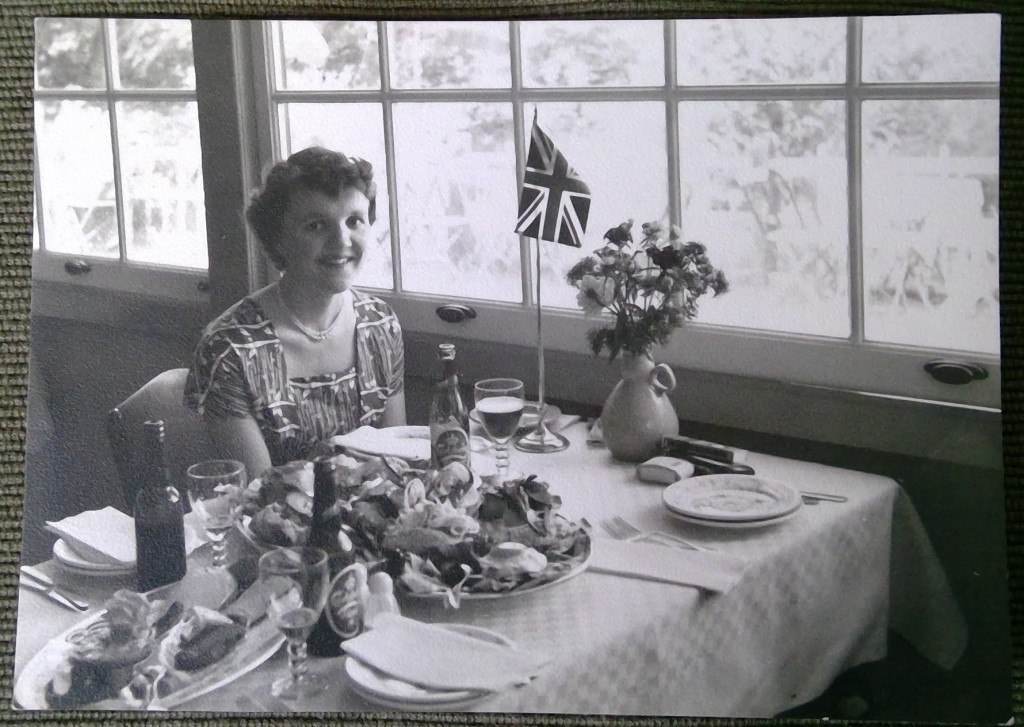
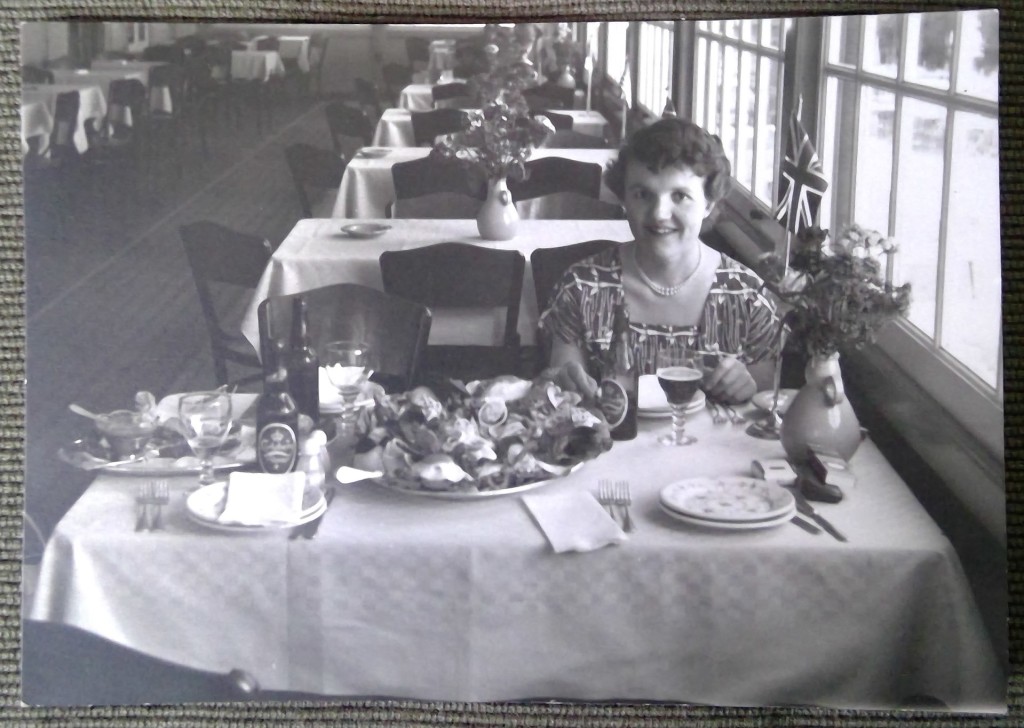
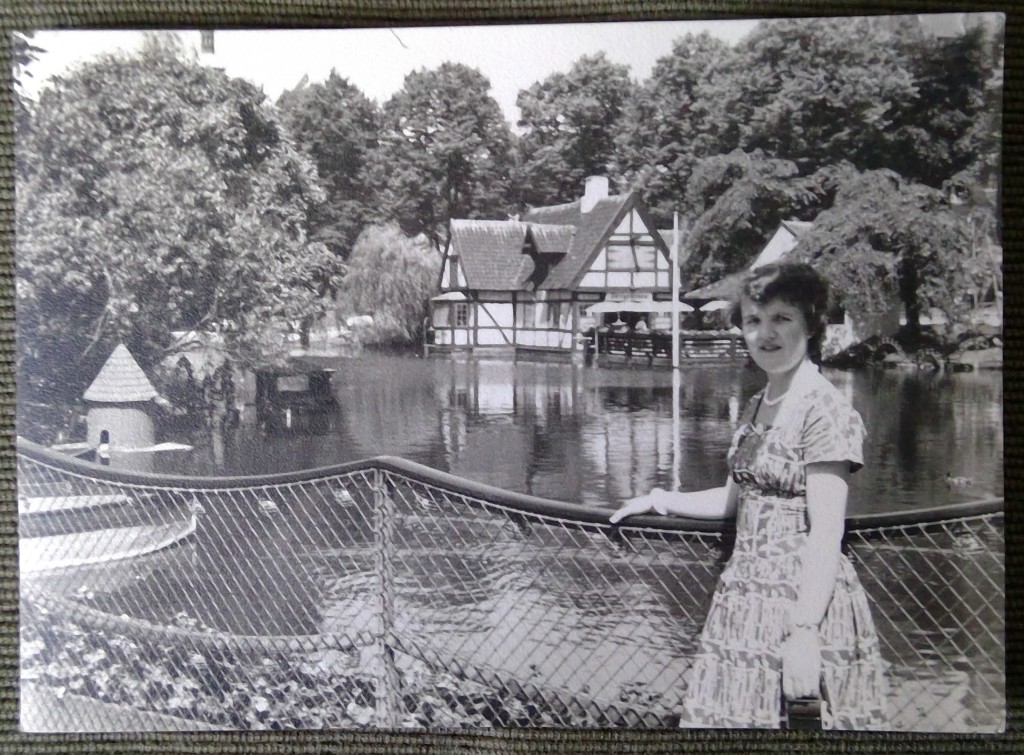
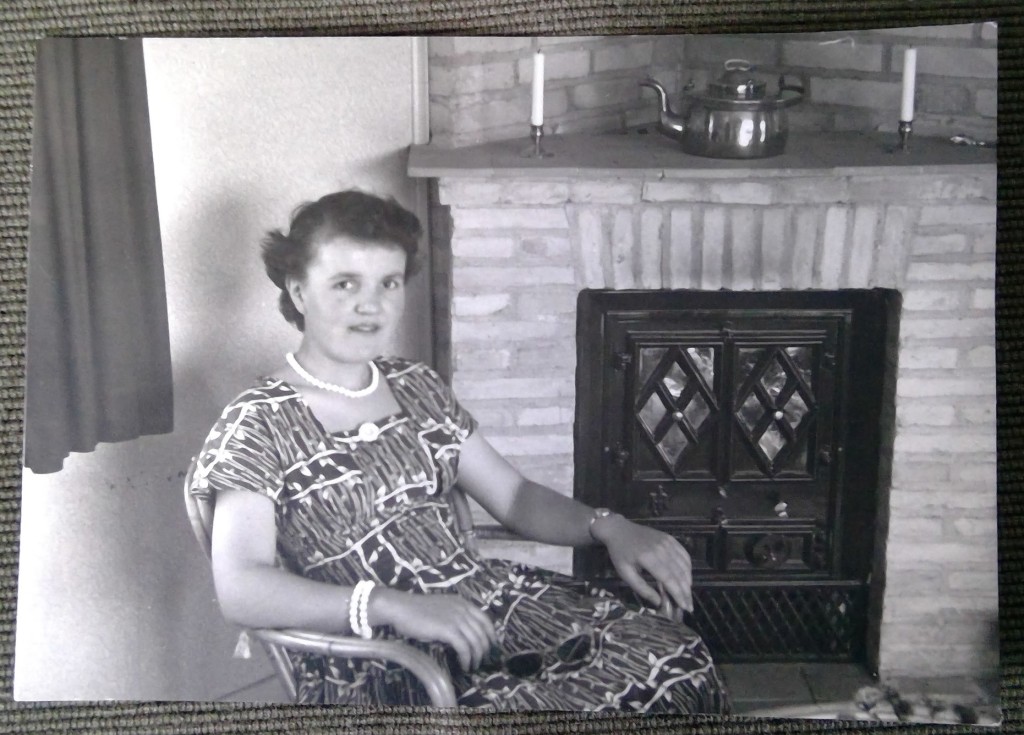
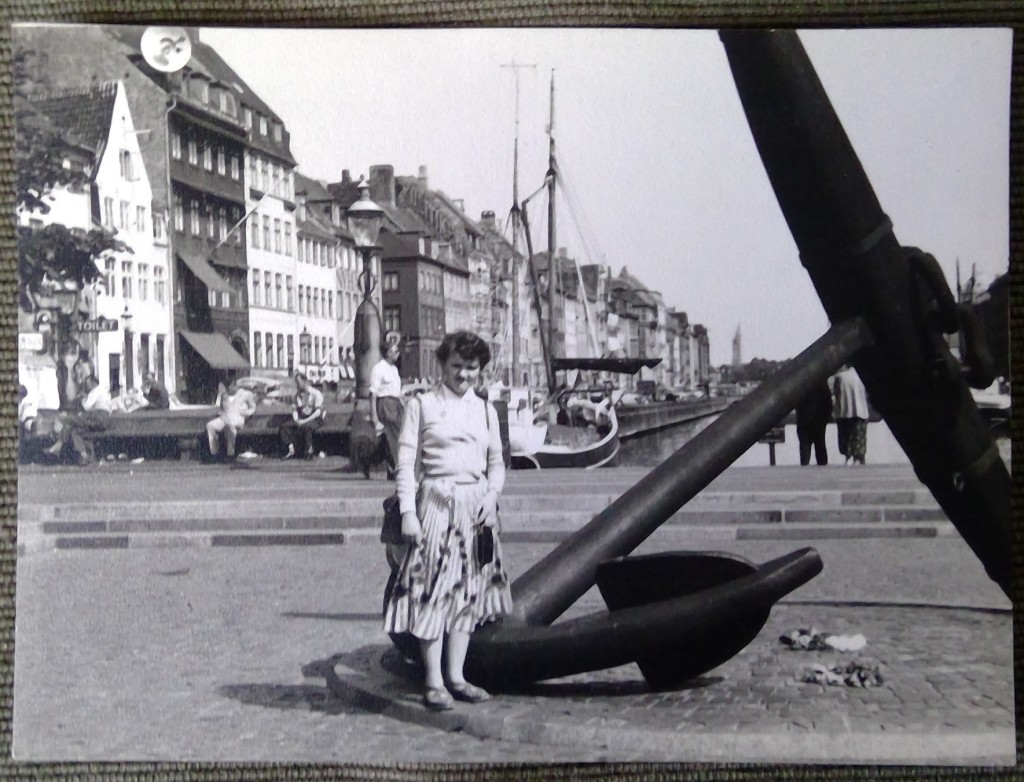
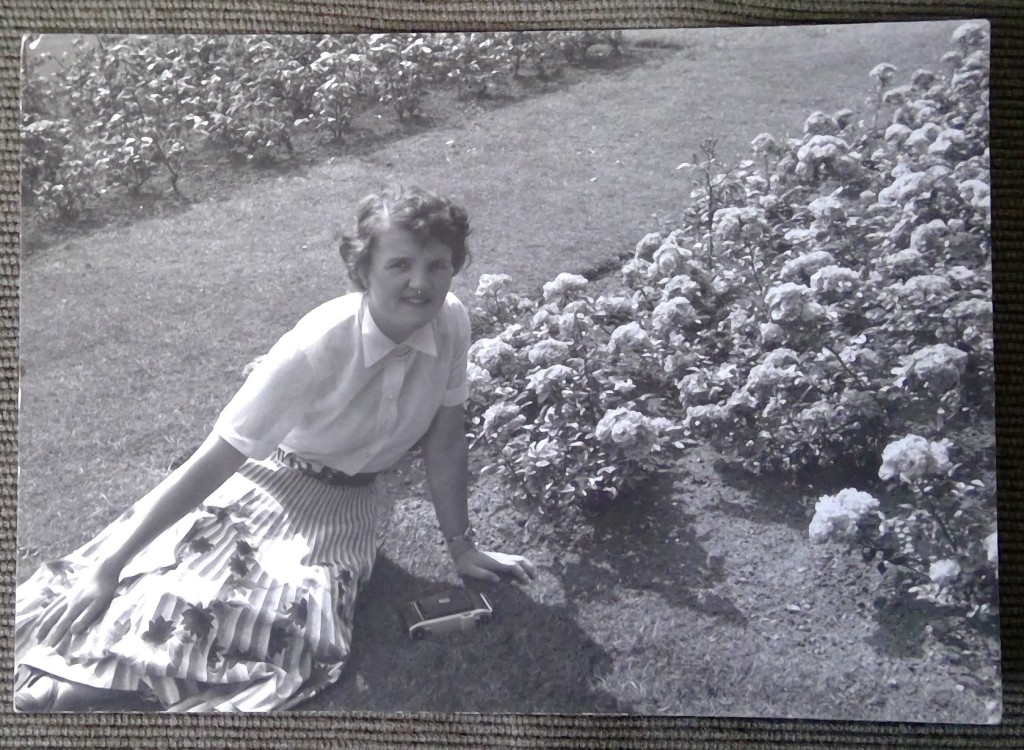
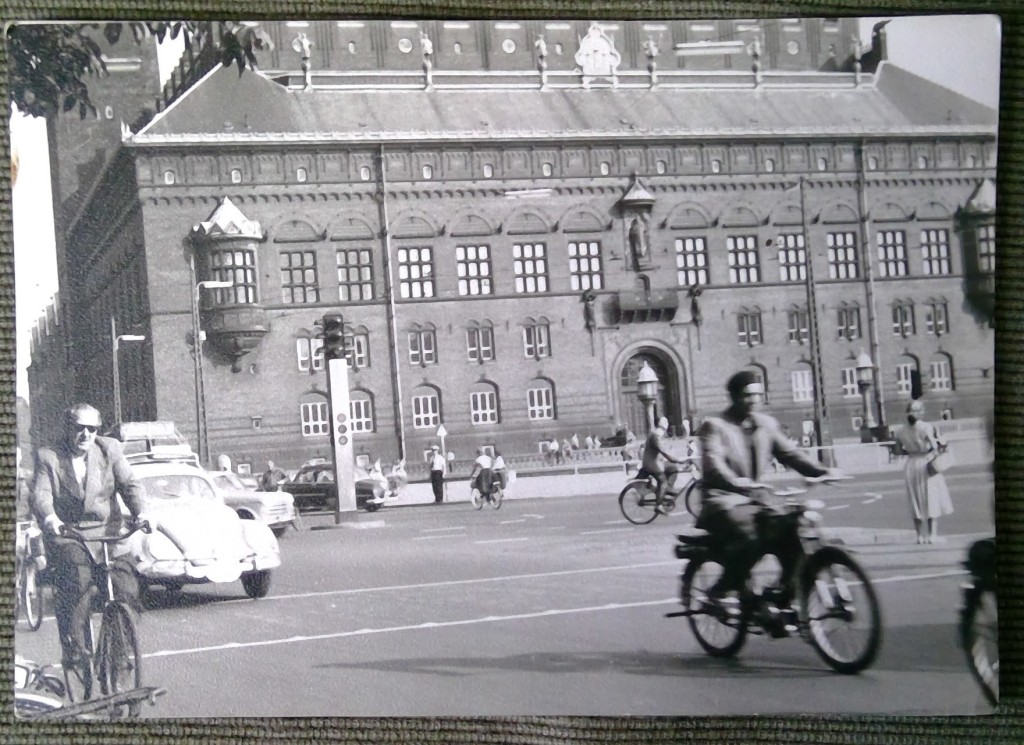
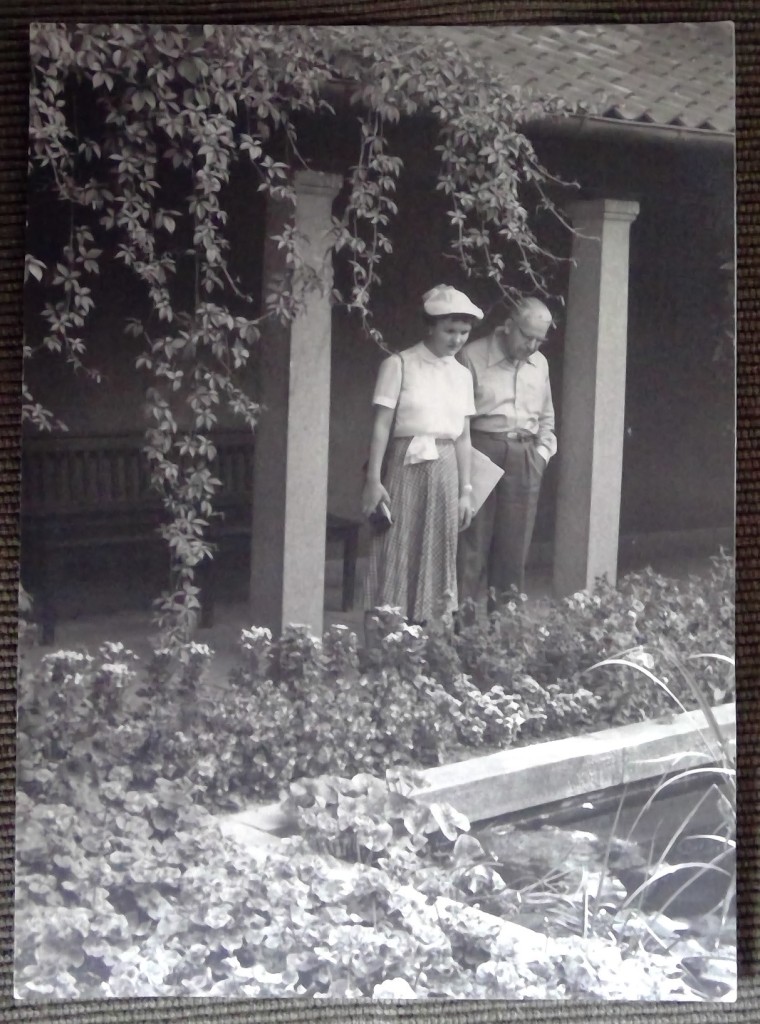
Seven of these show the same young lady offering the camera a timid yet excited smile. The same cursive handwriting appears on the back of all eight, noting the name of each location in blue ink: H. C. Andersens Odehuse (hus ~ house), Townhall Square, Tivoli, Farum, Restaurant “Store Klint” – Møns Klint, Rosenborg Garden Copehagen, Nyhavn Copenhagen – Memorial for sailors killed during war 1940-45.
Who was this young woman, enjoying her summer holiday in Denmark? I’d guess she was in her early twenties at the time, maybe a little younger. By the silhouette and pattern of her outfits, and the shape and label design of the Carlsberg beer bottle at the restaurant, I’d say these photos may have been taken at some point in the sixties. In the photo taken at Hans Christian Andersen’s memorial house, she’s standing next to an older man – her father? By the distinctiveness of the three outfits she appears wearing in the pictures, I’d say they were taken over the space of at least three days, maybe more, since Møns Klint is about 140 kilometres south of Copenhagen, and Odense, where Andersen’s memorial house is (if that is indeed the same house as the one in the photo), is some 300 kilometers west, across the Smålandsfarvandet.
In some of the photos, she is holding or sitting next to a camera – did she take the candid shot of the traffic around the City Hall in Copenhagen? Was she a keen photographer, an avid traveler? Did she have a soft spot for Andersen’s fairy tales, and if so, did she have a favourite? Did she love flowers and nature, since three of these eight photos were taken in gardens – Tivoli and Rosenborg in Copenhagen, and the garden of Andersen’s memorial house? Was she embarassed or flattered that her table was pompously marked apart with a Union Jack at that island restaurant? Did she love oysters, or was she trying them for the first time while on holiday?
I would love to know her name, and what became of her. I would love to know what the rest of her life was like. It’s unlikely that I ever will. Most likely, I’ll keep coming back to these photos to imagine my own stories about who she may have been, and what she may have been like. Yet this is the age of boundless resources and communication, so – if someone ever comes across this post and recognises her, will you please tell me her real story?

